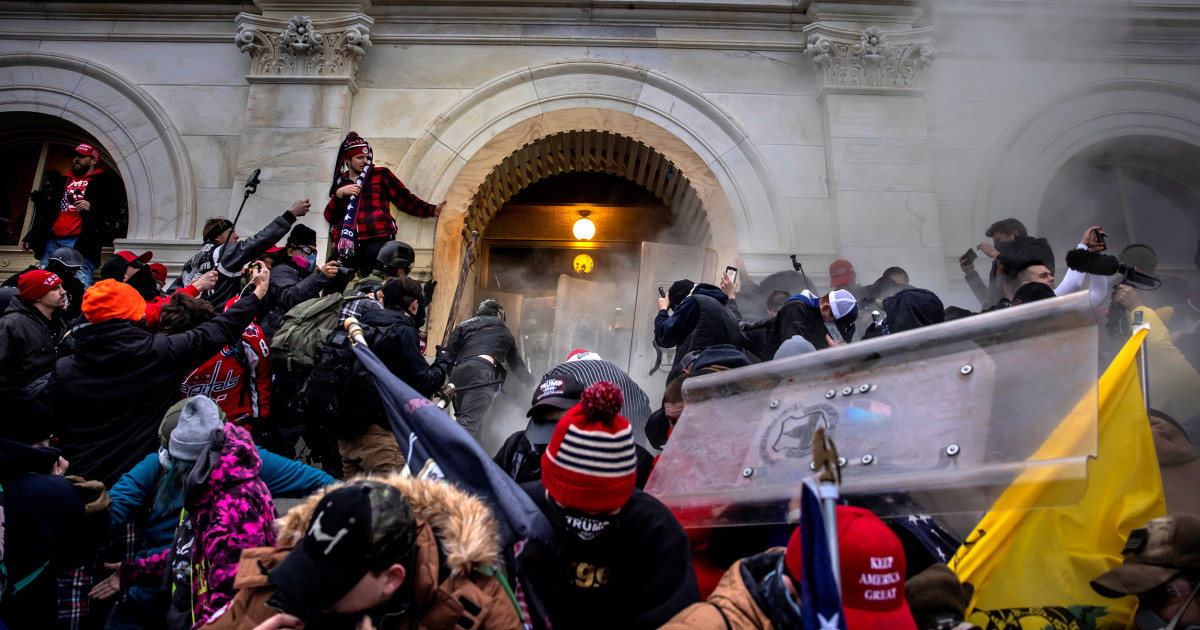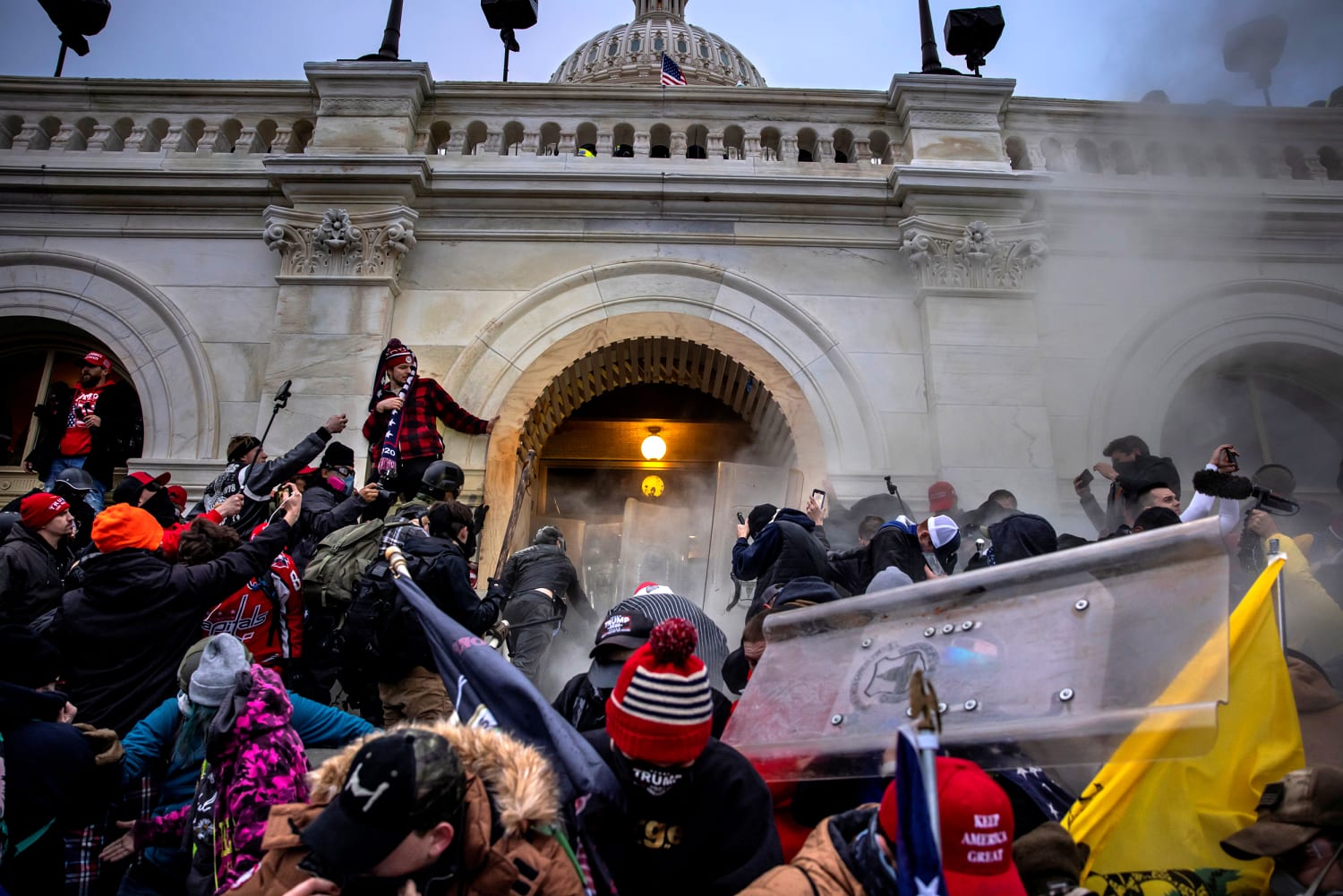
WASHINGTON — Federal prosecutors have now filed charges against 211 people accused of taking part in the assault on the U.S. Capitol last month, alleging a wide range of motives and behavior, from extreme violence to apparent ignorance that what they were doing was illegal.
Some defendants have been accused of assaulting police officers and threatening to attack lawmakers, while others are charged with the lesser offense of illegally entering a protected building. One father told authorities he wanted to give a son a memorable birthday.
Those charged came from 43 states, with Texas and New York topping the list. Men outnumbered women by about 7 to 1. Twenty were described as military veterans.
“There was absolutely a spectrum of support,” said Seamus Hughes, deputy director of the Program on Extremism at George Washington University. “In many ways, Jan. 6 was a bug light. It brought extremists from all areas. And they all came with different skill sets.”
He added, “You have the militias on one side. On the other side, you have the merely curious, people wrapped up in the moment.”
The FBI said nearly two dozen had ties to right-wing extremist groups, most notably the Proud Boys. Investigators said one of its national leaders, Joe Biggs of Florida, was among the first to enter the Capitol after another member, Dominic Pezzola of New York, used a police shield to break out a window, allowing the first rioters to get in.
Court documents said after Pezzola was inside, he smoked what he called a victory cigar and said on a video that he “knew we could take this mother—— over (if we) just tried hard enough.”
Proud Boys leaders from Hawaii and Washington state were also charged, including Ethan Nordean, who was accused of planning in late December for violent action in Washington, D.C., in January.
Three members of a militia group known as the Oath Keepers were accused of making similar plans and of using their cell phones as walkie-talkies during the siege to coordinate their actions. As it was underway, one said, “We have a good group. We have about 30-40 of us,” according to court documents.
A month after the siege at the Capitol, details in arrest warrants and indictments have yet to suggest that the raid was the idea of a single person or group. Nor do they specify when the first plans were formulated for storming the building to disrupt the counting of Electoral College votes for president.
The charges against Nordean, for example, say that “he and other Proud Boys members were planning in advance to organize a group that would attempt to overwhelm police barricades and enter the United States Capitol building.” But court documents don’t indicate exactly when such a plan was hatched.
Prosecutors said some of the hundreds who stormed the Capitol were prepared for battle, wearing helmets and tactical gear. At least four were seen on video or in photos carrying baseball bats. Twenty-two are accused of assaulting some of the 140 police officers who officials said were injured during the rioting.
Jeffrey Sabol of New York was charged with grabbing a Washington, D.C., police officer, dragging him down the stairs and beating him. The FBI said Ryan Samsel of Pennsylvania was in the vanguard of people who pushed over police barricades on the Capitol grounds, knocking down a Capitol police officer who hit her head and suffered a concussion.
A New Jersey man, Scott Fairlamb, was accused of shoving and punching a Washington, D.C., police officer. Fairlamb’s brother is a Secret Service agent. Court documents said Patrick McCaughey III of Connecticut used a police riot shield to forcefully push against a police officer pinned at a door who cried out in pain.
No charges have been filed in connection with the death of Capitol Police Officer Brian Sicknick. And the FBI has yet to identify the person who planted two pipe bombs near the Capitol the night before the siege outside the national headquarters of the Republican and Democratic parties.
Michael Sherwin, the acting U.S. attorney for the District of Columbia, said prosecutors could file charges of seditious conspiracy for anyone considered a leader or commander of the siege, but no such cases have yet been filed.
At the opposite extreme, court documents say some who entered the Capitol seemed unaware it was illegal and claimed they were simply swept up in the fervor. Many later told the FBI they regretted what they did and turned themselves in.
Prosecutors said 21-year-old Dalton Ray Crase drove from Lexington, Kentucky, with two other men and attended the rally where then-President Donald Trump spoke before the assault. The FBI said he admitted entering the Capitol but said he did not participate in any violence, telling agents, “I think it was dumb that we went in,” and adding, “I was breaking the law by being in the Capitol building but it didn’t register with me.”
The FBI said James Uptmore of San Antonio was at the Capitol on Jan. 6 as part of a five-day trip to celebrate his son’s birthday. Agents said the son, Chance Uptmore, told them he entered the Capitol building “because he was caught up in the crowd and because it was a once-in-a-lifetime event.”
The FBI’s task of identifying people who entered the Capitol was aided by the more than 200,000 photos and videos sent in by tipsters, including a few who turned in members of their own families, and by the use of facial recognition software to put names to faces.
Investigators said they had little trouble identifying Troy Faulkner of Ohio, accused of kicking in a window. He was photographed wearing a coat that said “Faulkner Painting” on the back.
Source: | This article originally belongs to Nbcnews.com










